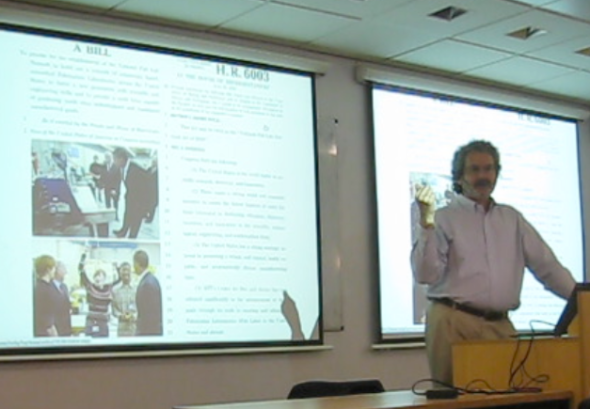the guru
Posted: November 14, 2012 Filed under: digital fabrication, innovation, making, manufacturing, Uncategorized | Tags: digital fabrication, education, Fab Labs, Glasgow, making, MAKlab, Neil Gershenfeld Leave a comment
The other day I had the fantastic opportunity to hear about fab labs from the man himself, Neil Gershenfeld. He was visiting Glasgow to receive an honorary professorship from Strathclyde University and found the time to host a Fab Lab network meeting and give a public talk.
Some points of note were:
1. The traditional model of patenting products that you then manufacture is not best suited to distributed manufacture. The value is to be found in the design, or in the transformational impact when lab users learn new skills that enable them to make something that matters to them.
2. Just as the labs offer a distributed manufacture system, The Fab Academy is a complementary distributed education system – where e:learning is likened to timeshare and university education is the mainframe (or mothership).
3. Value is measured in many ways – social impact is as important as economic impact (and can be just as vital in attracting revenue)
4. The similarities are more noticeable than the differences: each lab may have a different flavour, but creative people are more similar then they are different – this also goes for any distinction between rural or urban labs, yes, they may be designing herding systems, but the skills and methods are transferrable across a whole host of situations.
5. The network, in addition to offering support and a forum for knowledge exchange, enables larger funding streams to be accessed.
6. The cost of the standard lab has remained fairly stable (around $90k). As the network has evolved, potentially reduced costs have been balanced by the ever increasing ambition of lab users.
7. Fab Labs are not 3D printers! “You use the 3D printer when nothing else works.”
